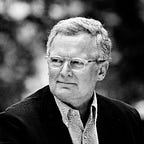Interactive competence
People are simultaneously forming and being formed by each other at the same time — all the time.
The industrial age was about limiting the scope of choices. This was accepted since the need to gather costly information and to communicate with low quality and expensive tools was minimized. Furthermore, as the scope of decision-making and action was narrowed, the learning requirements for workers and customers were limited, reducing the transaction costs of work. The efficiency contribution of mass production was partly derived from these low information- and communication-related costs.
Today, in contrast to people being content with limited choices, offerings as problem definitions and problem solutions are created on-demand to meet diverse, sometimes unique requirements.
For knowledge workers and customers the task of gaining the input needed for these situations is creating an entirely new information environment. You can never be fully prepared in advance. Creative learning is becoming the fundamental activity.
The new competitive edge comes from interactive capacity: the ability to connect with information and people, as and when needed. Knowing depends on how you are present and how you communicate.
The idea of interactive competence also reflects the radical change in thinking that is going on. We are leaving behind the Western preoccupation with the autonomous, heroic individual and beginning to appreciate the importance of social processes and interdependence.
This new understanding of competence suggests that the capability to act is a social process. People are simultaneously forming and being formed by each other at the same time — all the time. We want to be agile and resilient and we want to learn effectively and scale up learning. The tension of our time is that we want our firms to be flexible and creative but we only know how to treat them as systems with a fixed number of lines between the boxes, the functions that are still seen separated.
It is time to change the way we think about organizations. It is not about hierarchies vs. networks, but about a much deeper change. Organizations are creative, responsive processes of emergent organizing. All creative processes have the capacity to constantly self-organize all the time. Change is not a problem or an anomaly.
New information is the organizing input. Solutions are always temporary. Human beings relate to each other. They communicate and their responses are based upon the response they receive from their communications. Information is the energy of organizing. When information is transparent to everybody, people can organize effectively around changes and differences, around customer contexts and innovative experiments.
What we have still not understood is that people need to have access to information that no one could predict they would want to know. Even they themselves did not know they needed it — before they needed it. Thus an organization can never be fully planned in advance.
When information is transparent, different people see different things and new interdependencies are created, thus changing the organization. The context matters more than ever. The easier the access that people have to one another and to (different) information is, the more possibilities there are.
.
Credits Gregory Bateson, Patricia Shaw, Ken Gergen, John Dewey
